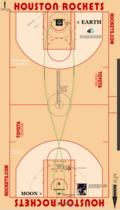File:SunMercuryVenusEarthMoon-Rockets full-court.png
Appearance

Size of this preview: 342 × 599 pixels. Other resolutions: 137 × 240 pixels | 274 × 480 pixels | 438 × 768 pixels | 585 × 1,024 pixels | 1,170 × 2,048 pixels | 3,750 × 6,565 pixels.
Original file (3,750 × 6,565 pixels, file size: 3.41 MB, MIME type: image/png)
File history
Click on a date/time to view the file as it appeared at that time.
| Date/Time | Thumbnail | Dimensions | User | Comment | |
|---|---|---|---|---|---|
| current | 02:31, 27 July 2014 |  | 3,750 × 6,565 (3.41 MB) | Tdadamemd | Adding speed of light info, giving the times it takes for light from the Sun to travel to the average distance of Mercury, Venus, Earth and Neptune. |
| 07:31, 3 February 2013 |  | 3,750 × 6,565 (3.35 MB) | Tdadamemd | Adding distances from the Sun (center of the basketball) to the planets. Also adding the Moon's max height out of plane in Moon diameters. | |
| 05:33, 22 January 2013 |  | 3,750 × 6,565 (3.16 MB) | Tdadamemd | Large labels added. Inset images shifted to other side so that planet label pointers also indicate direction of revolution. Arrow pointing to outer planets also added with info about their scaled diameters and their distance beyond Earth's backboard. | |
| 13:41, 14 January 2013 |  | 3,750 × 6,565 (2.95 MB) | Tdadamemd | User created page with UploadWizard |
File usage
No pages on the English Wikipedia use this file (pages on other projects are not listed).
Global file usage
The following other wikis use this file:
- Usage on hif.wikipedia.org


